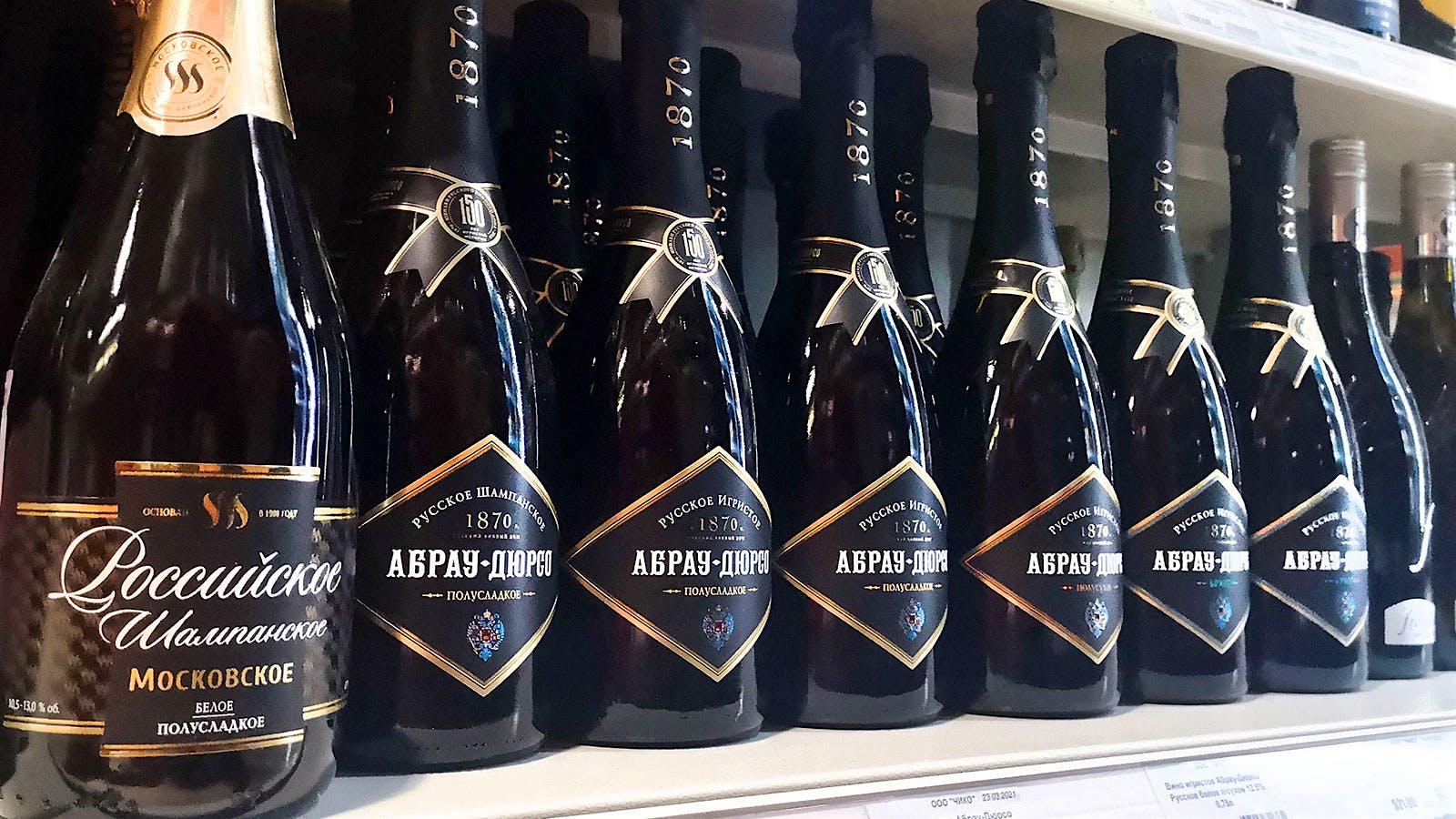Is Champagne only from Champagne? What about шампа́нское? Producers in the Champagne region of France are in an uproar over a new law in Russia that they believe infringes on the protected name of Champagne for wines sold in Russia.
The legislation, signed by Russian president Vladimir Putin on July 2, affects the back label of any bottle of bubbly from a non-Russian producer. The word “shampanskoye,” Russian for “Champagne,” may no longer appear on the back label, neither in Cyrillic characters nor alliterated in the Latin alphabet. Non-Russian producers must instead categorize their wine simply as “sparkling wine,” in Cyrillic letters. Only sparkling wine made by Russian wineries will be allowed to continue using “shampanskoye” on labels.
“I’m just appalled,” said Fabrice Rosset, CEO of Champagne Deutz, describing a “sentiment of consternation” shared by producers through the Champagne region. Russia is a growing market for Deutz, representing about 5 percent of total exports in 2020. “What’s the reason, the objective, the rationale? No one can benefit from this. I’m not only referring to Champagne producers but also to marketers, and more importantly to the confusion it can create in the mind of consumers.”
Although Champagne producers can still use Champagne in Latin letters on the front label, the decision to limit its use on the back label is unconventional. The Champagne name is protected as an Appellation d’Origine Controlee (AOC) in more than 120 countries. That protection ensures that consumers buying Champagne know it’s a sparkling wine produced only in the Champagne region of France from the region’s 86,000 acres of vineyards. (Champagne is a protected name in the U.S., though a few older American brands are grandfathered in and continue to use the term on their sparkling wines.)
“Champagne was born in the French region of Champagne more than three centuries ago. As a designation of origin, it is the result of a recognized technical know-how in a delimited geographical area, which gives the product its characteristics,” said Gaëlle Egoroff, manager for the protection and valorization of the appellation at the Comité Interprofessionnel du Vin de Champagne (CIVC), Champagne’s governing trade organization. “This decision does not provide Russian consumers with clear and transparent information on the origin and characteristics of wines. As most of them cannot read the Latin alphabet, they [might] buy a product that has nothing to do with real Champagne.”
Shampanskoye has a long history in Russia. Sparkling wine has been popular for centuries, and wineries there began producing local bubbly in the 19th century. During Soviet times, Sovetskoye Shampanskoye was created as sparkling wine for the people. The term has become a generic name for all bubbly since.
The CIVC has vocally opposed the new legislation, reaching out through diplomatic channels as well as initially calling on producers to halt shipments of Champagne to Russia in protest. “Champagne producers have asked French and European authorities to obtain the modification of this unacceptable law via the diplomatic process. It is too early to tell more at this stage,” said Egoroff.
LVMH’s Moët Hennessy, which owns Moët & Chandon, Veuve Clicquot and other prominent houses, announced on July 3 that they would follow the CIVC’s lead and suspend shipments to Russia, only to reportedly reverse course the next day and accept the labeling change. A company official declined to comment for this article.
Other houses are in a similar holding pattern. “As a rule, we follow and respect the recommendations of the Champagne Bureau (CIVC); for the moment, the matter is being analyzed,” said Guy de Rivoire, commercial director for Champagne Bollinger. “We all know the stance: There is only Champagne from the Champagne district. This is the rule of any AOC status. Luckily, we had just made one shipment to Russia, with the formerly applicable back labelling, that we are hopeful will be accepted. We are discussing with our Russian importer about the logistics of the next shipment.”
Russia is Champagne’s 13th biggest market by volume, accounting for nearly 160,000 cases or 1.4 percent of the region’s total exports in 2020, according to the CIVC. If the CIVC’s efforts to amend the law fall flat, Champagne producers will have to print new back labels and have the labeling certified by the Russian authorities before any shipment would be possible.
And producers worry about long-term implications. “On a more global scope,” said Rosset, “beyond the achieved status of recognition on the word ‘Champagne,’ it’s like going backwards in the mutual understanding countries have reached on the concept of appellations.”
Stay on top of important wine stories with Wine Spectator’s free Breaking News Alerts.
